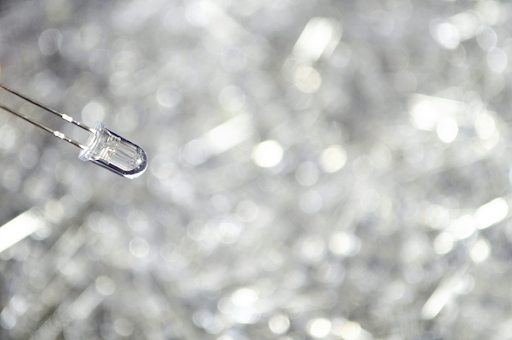
The increasing use of intelligent air flap systems shows how important it is for automakers to actively use and manage the air streams produced during driving to reduce fuel consumption and CO2 emissions.
In the open position, air flap systems enable the best possible engine air flow and simultaneously provide a high cooling capacity. When closed they reduce drag and the time necessary to bring the engine up to operating temperature. Market leader Röchling Automotive showcased its controllable shutter systems at the SAE 2014 World Congress in Detroit, USA.
On show was the Active Grille Shutter Evolution II – Style, which is controlled by purpose-designed actuators. It significantly reduces fuel consumption and therefore emissions. In addition, electric vehicles such as the TESLA S benefit from this Röchling Automotive Active Grille Shutter EVolution, which extends the driving range through improved aerodynamics and simultaneously ensures effective battery cooling and temperature control. Because a battery only requires external cooling in 10% of all operating situations, the air flaps mainly remain closed, so reducing drag, CO2 emissions and fuel consumption. Röchling’s shutter systems achieve fuel savings of at least 1% on average in the European driving cycle.
The development of the active grille shutter technology is constantly evolving. It can be used for complete engine encapsulation, which leads to further reduction of fuel consumption and emissions. In the development of its air flap systems, Röchling Automotive places emphasis on improving efficiency through the interplay of its expertise in air flow management, as well as acoustics and thermal management. Underbody parts influence fuel economy, corrosion protection and driving performance as well as exterior and interior noise.
Lightweight materials such as LWRT (low weight reinforced thermoplastics) help to limit the additional weight while simultaneously optimizing the vehicle’s performance. Compared to other compact materials such as GMT (glass mat reinforced thermoplastics), LWRT allows weight savings of up to 50%. A three-layered sandwich-like LWRT structure has been developed to provide high part stiffness and low mass. The use of three layers of glass fiber reinforced thermoplastic material enables Röchling Automotive to individualize the layers according to the needs of customers. In this way it is possible to create street-side layers with a better stone chip protection or engine-side layers with higher or lower porosity for optimized NVH characteristics.
LWRT underbody parts enhance NVH characteristics and consequently the comfort of the driver. The lightweight material significantly improves the acoustic performance specifically above 1000 Hz, but already starts at frequencies below. Acoustic absorption in high heat areas where aluminum shielding is required is achieve through the micro-perforation of the aluminum structure. Besides aerodynamic and acoustic aspects, thermal management is also of great importance. LWRT components can be utilized for selective cooling of the gearbox or engine – for example, specially designed ducts and openings guide cold air to hot spots or release hot air from the engine compartment. Having been proven in commercial vehicles, SCR exhaust after treatment systems are now being fitted to diesel-powered passenger cars.
With SCR, a chemical reaction caused by a urea solution injected into the exhaust gas system splits the nitrogen oxides into their ingredients water and nitrogen. Röchling Automotive has used its plastics expertise to develop a full SCR system with injection-molded tanks. The restricted space in the engine compartment requires a compact and highly efficient tank system. As a market leader in degas bottles and with many years of experience as an innovative specialist for fluid components, Röchling Automotive broke new ground with its SCR systems.
The resulting solutions are space and weight-optimized and integrate a wide number of features, giving them a high degree of flexibility. For example, the tank system is both light and almost completely maintenance free. In addition, the injection-molded plastic tanks benefit from their compact design and the use of corrosion-resistant material. Due to the high quality of manufacturing, Röchling Automotive’s SCR system meets the strict sealing guidelines for AdBlue as well as all additional requirements posed by the urea solution. A special valve in the sealing cap permits pressure equalization.
In addition to the plastic tanks, the metering module of the SCR system is of great importance. It thaws and warms the solution at temperatures below 11 degrees Celsius and provides additional functions. The module facilitates fluidity by using a pump and filters out impurities. To ensure continuous measuring of level and urea quality in the wake of increasing on-board diagnostic (OBD) requirements, Röchling Automotive utilizes a two-pin plastic sensor originally developed for water-cooled plastic degas bottles. The effective design of the entire SCR system eliminates nearly all disruptive sloshing noises, while modern simulation tools allow wall thicknesses to be optimized for safety and weight. In this way, complex procedures used during the development phase, such as the simulation of flows or even defrosting processes under realistic conditions guarantee in advance optimum performance of the system before the first in-vehicle test














More Stories
LED Lighting for Heavy-Duty Applications: Durability, Efficiency, and Versatility
Celanese Materials Shine in Multiple Category Winners at 2024 SPE Automotive Innovation Awards
New future-ready single-slot PXIe controller for high-performance T&M applications from Pickering Interfaces